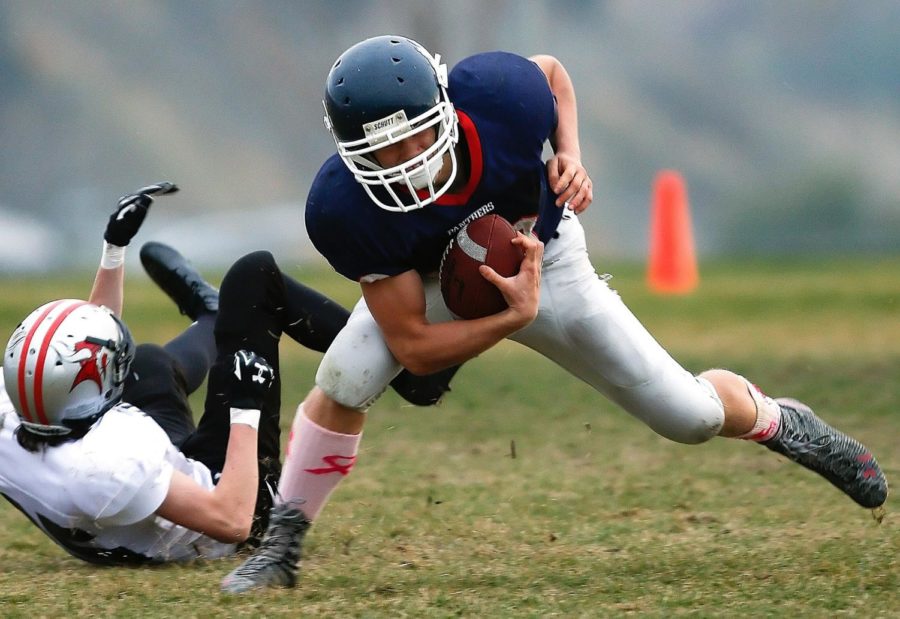Tagovailoa’s Injury Puts Spotlight on NFL Concussion Protocols
High school athletes follow a strict return to play plan
October 5, 2022
Sunday, Sept. 25, NFL Dolphins football player Tua Tagovailoa suffered a concerning injury during the Dolphins-Buffalo Bills game. Reportedly, his head struck the turf after being knocked to the ground by a Bills linebacker.
He was quickly taken to the locker room for a concussion check. While it was questionable to viewers as to whether Tagovailoa injured his back or head, he returned to play during the third quarter and finished out the game with a touchdown. However, many NFL followers were troubled at how quickly Tagovailoa was let back into the game.
Four days later, the Dolphins played the Cincinnati Bengals. During the game, Tagovailoa was sacked and his head hit the turf for a second time, fingers and arms flexed in a manner that revealed concussion-like symptoms. He was taken to the hospital immediately where his concussed state was confirmed.
After Tagovailoa’s injuries, the NFL received criticisms from fans and players alike, calling for protocol reform within the league. The research on NFL brain injuries reveals concerning long-term effects for players such as personality and brain disorders, dementia and amyotrophic lateral sclerosis.
While there is a five phase reintegration process a player must follow before fully reimmersing themselves back into the game, many feel that more should be done to protect players from long term injuries.
Rebecca Jones, head athletic trainer believes that Tagovailoa should not have played in the Cincinnati game.
“This is a really hard case. I would like to say that the NFL and all medical staff have been negligent in the handling of this case, but we simply don’t have all the facts and I feel like with the limited evidence that I have seen, the issue was handled very poorly,” Jones said. “Tua should have never been out on that field Thursday night. I do not think that four days is enough time for recovery from the initial injury even if he passed all the screening tests with flying colors.”
In order to avoid a similar situation on the high school field, there are numerous protocols in place to keep the athletes safe.
“If an athlete is suspected of a concussion, they sit out the rest of the game or practice that it happened in. We do a Sideline Concussion Analysis at the time of injury, and later if we find reason to suspect that an athlete has a concussion, we send them to our concussion doctor who does more testing with them,” Jones said. “All of our athletes in contact sports also take the Impact Test prior to the start of their season. This test tells us about their brain when it is healthy and allows us to make informed decisions after an injury based on how they score on the test then.”
After the player is screened, the NCHSAA has a thorough process to gradually integrate the player back into the game.
“We follow the standard six day-return-to-play-progression as spelled out by the NCHSAA: Days one to three are cardiovascular activities increasing in intensity, day four is non-contact practice, day five is full practice, day six is return to full play. Any symptoms on any day mean we repeat the day. If we fail two times, they go back to the doctor for even further evaluation,” Jones said.
Coaches are also required to go through thorough training regularly to learn how to identify concussions and properly handle them.
“We take the NFHS learn concussion course each year, and we talk about the symptoms in the coaches meetings and tell them what to do and what to expect,” Jones said.


